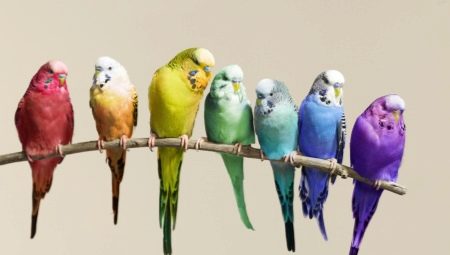Having acquired a feathered pet, the owner is responsible for his life and health. Few people know when parrots get old and how many years they can live. We will tell you about the ranking of long-lived parrots, about the care rules that prolong the life of a feathered pet, in this article.
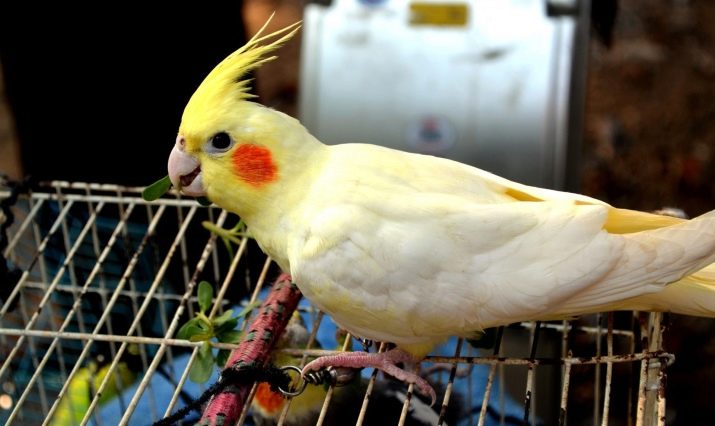
Lifespan of different species
The parrot family is large and diverse, it unites more than three hundred species of birds. Among them there are large representatives, such as macaws, reaching up to 100 cm in length, and small parrots no longer than 10 cm. People who lived more than two thousand years ago already tamed parrots because of their high intellectual and speech abilities.
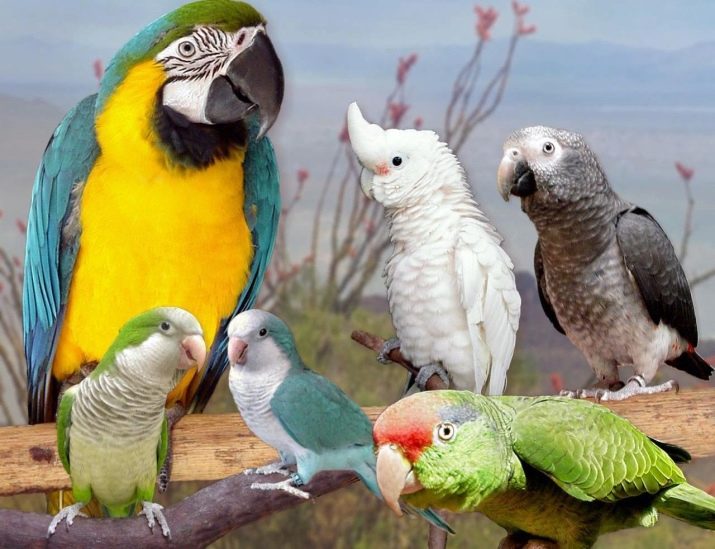
It is impossible to give an answer to how long parrots live - it is better to consider this question from the perspective of each species. Unfortunately, the legends that parrots can live a hundred or more years are wrong. Such parrot centenarians are extremely rare, scientists consider this hypothesis a myth, but the life of some individuals from large breeds can be up to 75–85 years.
The smaller the parrot’s appearance, the shorter its average life expectancy.
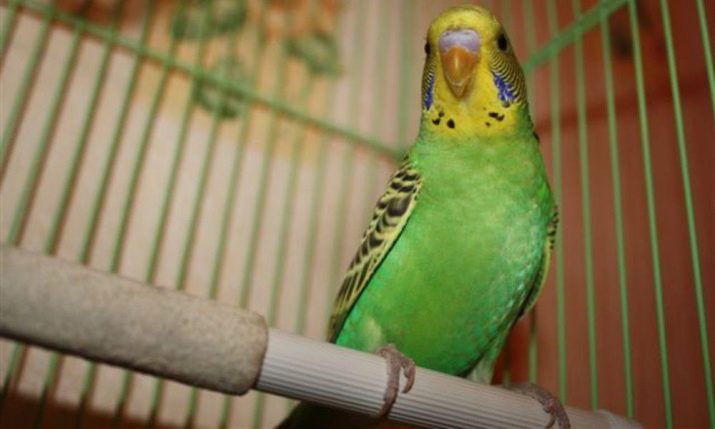
The list of parrots, popular for breeding at home, has about twenty different species. Most often kept in the houses of the budgerigar, Jacquot, Corella, Rosella; less often aru, cockatoo, lovebird parrots. Consider the life expectancy of popular species.
Budgerigar
This is the most frequently bred bird species in our country and around the world.Caring for them is simple, and a wavy feathered pet will become a favorite and will demonstrate its natural communication skills. Each owner is interested in how long a budgerigar can live. The usual life span of this breed at home with proper care is 11-15 years, but long-lived individuals are known to delight their owners and up to 20 years.

Budgerigars, like most parrots, came to us from Australia, this is their homeland. These birds living in natural conditions and creating huge flocks in nature usually live less than domesticated relatives - only 8-10 years.

Lovebirds
Parrots smaller than the budgerigar, often planted in city apartments. Of the six species of lovebirds, pink-cheeked are the most popular. The romantic name "lovebirds" was given to these parrots because of their ability to create strong couples for life.
However, contrary to the prevailing myth, the bird does not die if its other half dies.
Loved by human beings have lived for 15 years or more.
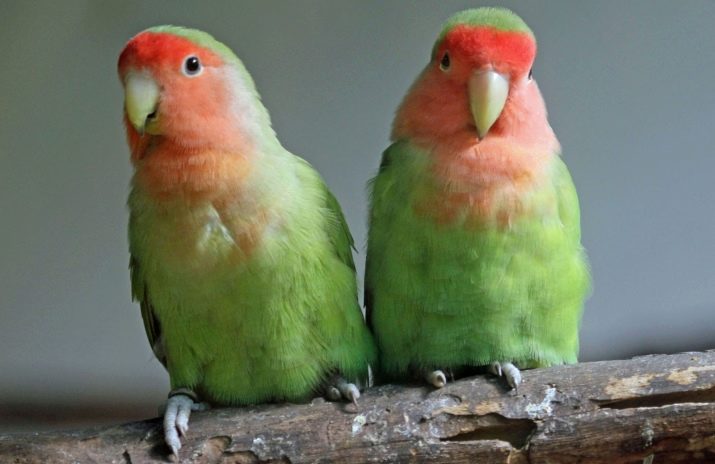
Corella
This bright cockatoo parrot with a blush on its cheeks, a crest and a high level of intelligence can live 18–20 years, maximum 25–30 years. Let the owners of the Corella (the second name of their nymph) not be embarrassed that this bird is difficult to teach human speech, especially its individual words. This feathered pet has a cheerful disposition, is firmly attached to the owner, is undemanding in care.
The bright appearance of the coral is very original: birds with a silver, delicate beige, lemon and even pearl color have recently been bred, and the male coral can always be recognized by the black and gray striped lower tail feathers.
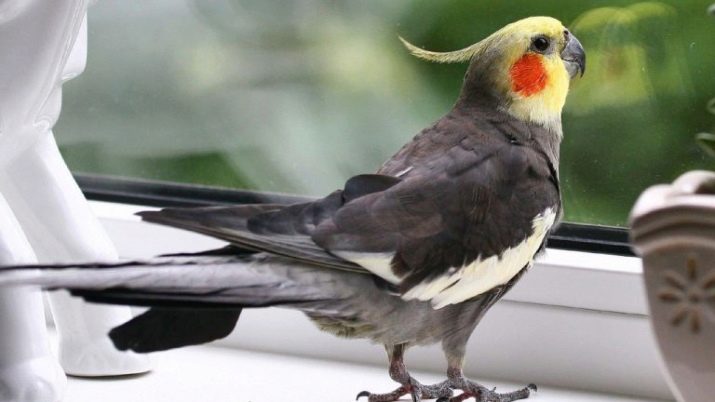
Rosella
This species of parrot has been gaining popularity recently. Rosella are characterized by a bright contrasting color, the combination of colors in the plumage of this parrot can be anything. Often there are blue-red, red-yellow, yellow-blue colors, plumage at the rosella on the back resembles scales. They are slightly larger in size than the budgerigar, have a wayward character, high imitative abilities, and have a strong beak that can cut through wires.
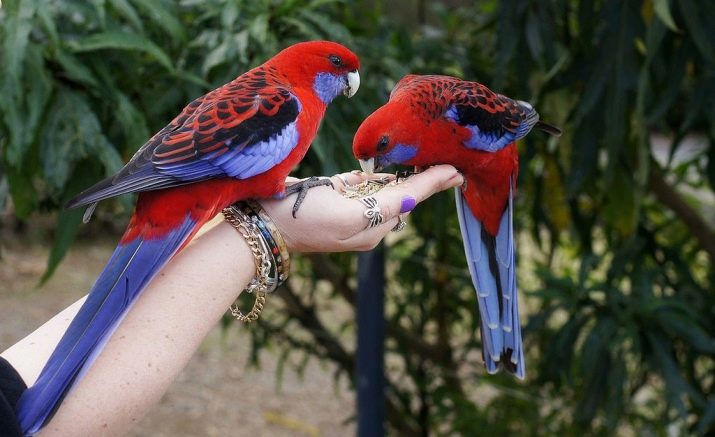
Rosell is referred to as parakeets, as well as budgerigars, and corellas due to the specific shape of the long tail. Despite long getting used to the person and the process of adapting to a new home, rosella are smart, capricious in care, undemanding in the diet, but cannot tolerate cool - below +20 C - air. In captivity in a person, rosella are able to live for quite a long time - 16-18 years, long-livers are often found, whose lifetime reaches 20 years.
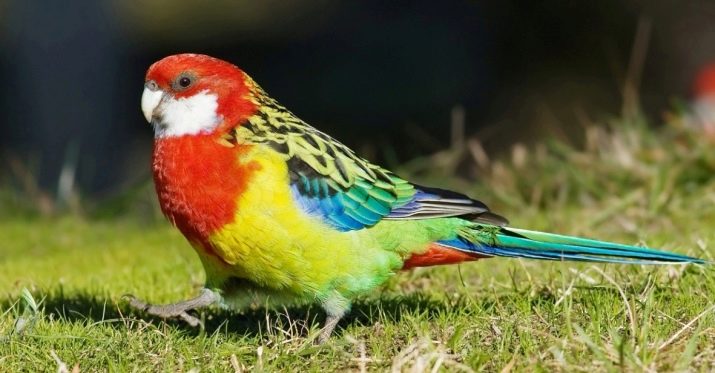
Cockatoo
A parrot with an outstanding character and a crested head with a powerful beak-nippers. The most famous are white cockatoo, but there are several species of pink cockatoo (Inca cockatoo, Moluccan cockatoo), yellow-crested and gray cockatoo (Gala).
These large representatives of parrots are considered long-livers among relatives: their life time can last up to half a century. Average norms are 35–40 years, and the maximum indicators of cockatoo life were recorded at the age of 80. A cockatoo can reach this age with good care in captivity. In nature, where a cockatoo lies in wait for many enemies, dangers and diseases, his age barely reaches the age of 30.

Jaco
Another large and long-living species of parrots, having a monovid - gray Jaco. To characterize the abilities of a zhako parrot, you need to add super sociability and quick wit to the dog’s intellect.
They are able to speak not only in phrases, but also to support a straightforward conversation with the owner.
You definitely won't get bored with such a pet, but you need appropriate care for the bird. Then the Jacques parrot can please more than one generation of owners, having lived 50–70, and sometimes up to 90 years.
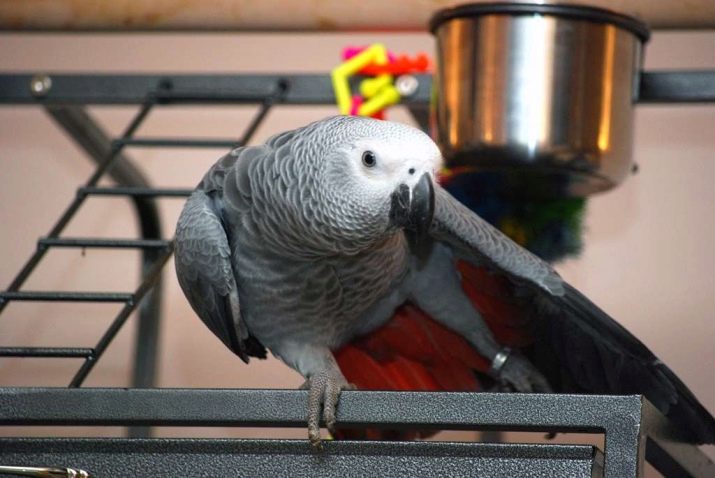
Ara
It has the largest sizes and is a long-liver among parrots.This bright parrot with plumage of saturated flowers has several subspecies that differ in the color of plumage and the size of the bird. Macaws have no differences in plumage by gender, their females have catchy plumage, like males. Perhaps this is due to the riot of tropical colors of their homeland - South and Latin America.
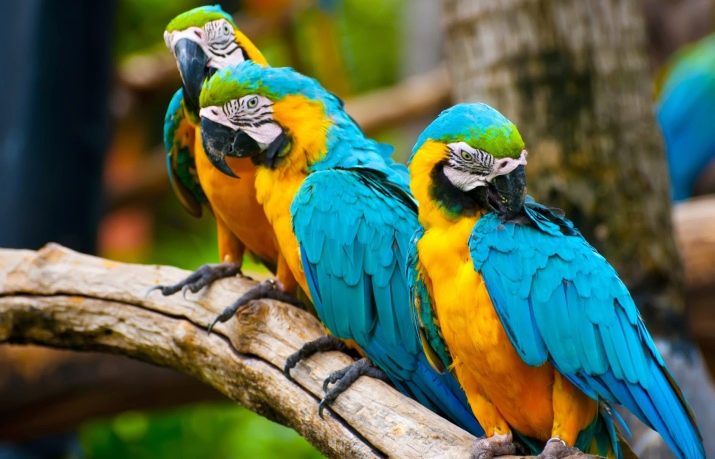
The high intelligence of the macaw parrot allows him to analyze and remember a lot, the bird shows excellent imitative abilities, loves to communicate with humans, the macaw can even ask the owner to eat or drink if he wants.
But this parrot needs a lot of attention, you need to pay proper care and provide good living conditions, a spacious aviary.
A man tamed by a man lives within 50-60 years.

Necklace parrot
The bird comes from India, a little larger than the corella (42–43 cm with a tail), is unpretentious and quick-witted. The feather color is diverse due to the efforts of breeders, but all parrots of this species have a clearly defined “necklace” on the neck of a contrasting, usually black color.
Before starting a necklace parrot, experts recommend listening to his voice - not all people cry out for this parrot.
Imitating a person, this bird can memorize up to two hundred words in its life, the average term of which is in the range of 20–25 years. From time to time, loving and attentive hosts live parakeets up to 40 years old.
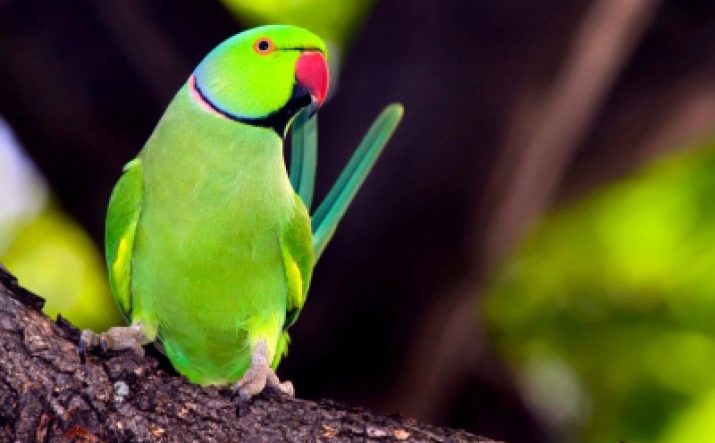
Amazon
The parrot is medium in size, has a light, cheerful, nimble disposition. This is an ideal pet for friendship with households, trained to imitate human speech. All of its species have predominantly green plumage and differ in the arrangement and colors of spots on the body of the Amazons. Sometimes Amazons surprise their owners with their impudent actions - this is the norm of their nature. Amazon is able to live next to a person from 15–20 to 50 years old; Amazons who have reached 70 years of age are also known.
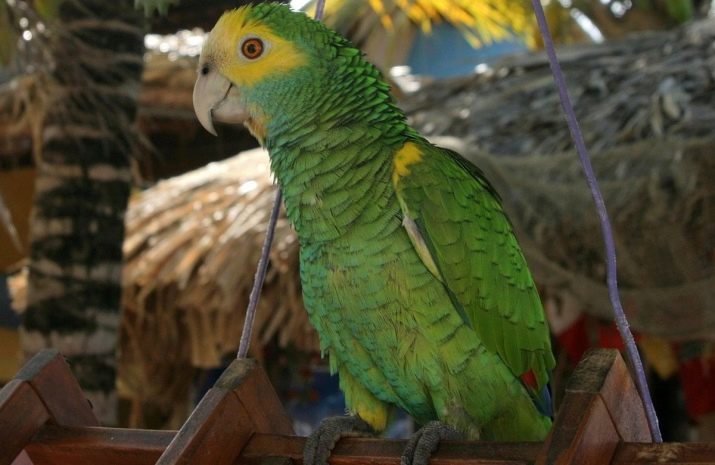
Aratinga or sun parrot
It was named so because of the beautiful yellow plumage, which, depending on the species, can be combined with plumage of a different color. It has a positive, affectionate character, not too demanding in care, which is why it is in demand for home maintenance. In addition, araterings are easily amenable to speech training and training, and the bird shows its discontent with a sharp cry. The life expectancy of a sun parrot in captivity ranges from 15 to 30 years.

Longevity Rating
Among the many species of parrots, cockatoos are rightfully considered centenarians, and macaw and jaco in second place. However, among each species there are its own champions, whose number of years of life is documented. These are parrots who lived in captivity and received the love and care of the owners. The figures of the maximum age to which parrots of different breeds can live are presented in our rating of centenarians. Birds here are arranged in descending order of years lived:
- Mollusk cockatoo, whose death was more or less reliably recorded at the age of 92 and a half years;
- yellow-crested large cockatoo, whose death occurred, according to some, at the age of 73 years, and according to others - at the age of 57;
- Inca Cockatoo, who lived 77 years;
- the green-winged macaw lived according to unconfirmed reports for 63 years;
- yellow-crested small cockatoo, which did not reach the half-century anniversary of three months;
- almost as many - 49 years and 7 months - lived a gray jaco, this was recorded by a scientific journal and one of the ornithologists;
- the blue-faced Amazon lived in captivity for 49 years;
- the life of one of the blue-and-yellow macaws proceeded for 46 years;
- one of the red-browed Amazons died at the age of 45;
- a scientific publication recorded the life of one of the Corelli until the age of 35;
- the Indian necklace parrot has lived a record for its kind 34 years;
- Fisher’s lovebird, according to some, lived to 18 years, according to others - 32 years;
- the wavy parrot broke all records among its kind, having lived to the age of 21, as confirmed by the veterinarian of the Moscow zoo;
- Lovebird Red-cheeked died at the age of 18.
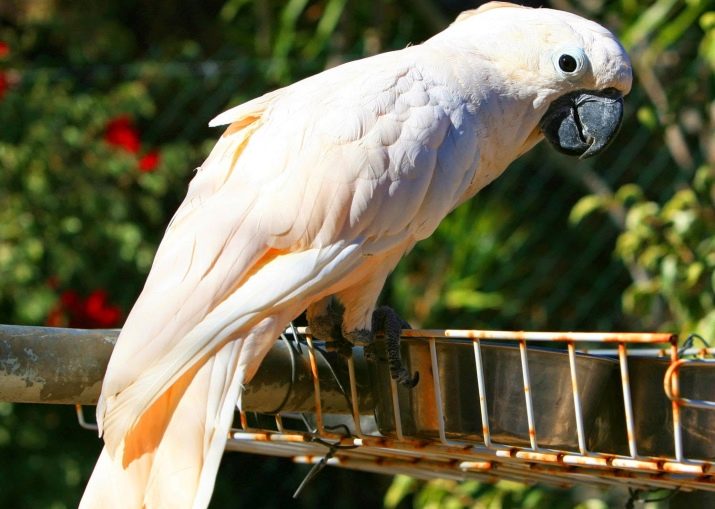
What affects the life span?
The life span of feathered pets is greatly influenced by environmental conditions and circumstances. Especially important are the quality of food and drinking water, cramped or normal conditions in the cell, the manifestation of attention and care of people around us, timely prevention of diseases.
Providing the feathered pet with comfortable conditions, it is possible to replenish the rating of long-lived parrots.
But often accidents interrupt the life of a pet forever. These include:
- parrot flying out of an open window;
- bird nibbling wires and cables under electrical voltage;
- blows on mirrors, unprotected glass, double-glazed windows - you need to curtain the windows with tulle or curtain;
- getting into open pots, containers with liquid;
- contact with cats, dogs, hazardous chemicals, or houseplants.
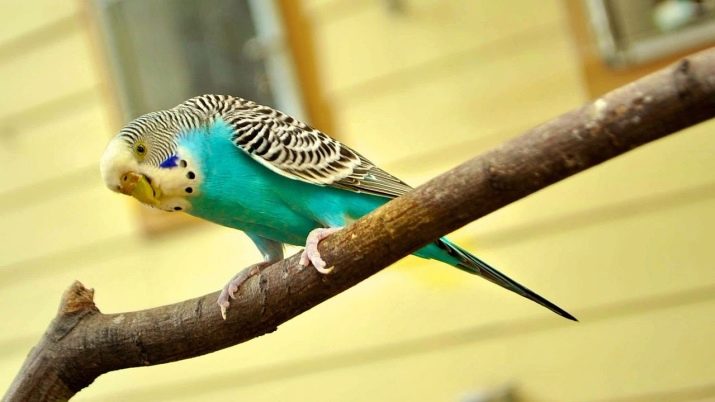
It is important to remember that a parrot is a shy bird subject to stresses that can be caused by the behavior of young children or other animals in the house. From fright, a bird can even have a heart break leading to death.
How to care?
Having taken the liberty and responsibility of a parrot, a person is obliged to arrange proper care for his pet. It is necessary to approach the content competently and study the special literature on feeding this or that type of parrot, its habits and preferences. The rules for caring for these birds boil down to the following general factors.
Food and water
In food for parrots, as well as in food for humans, it is important to maintain a balance of proteins, carbohydrates, fats, vitamins. The owner needs to feed the parrot with grain mixtures, vegetables and fruits, products, containing animal and vegetable proteins, given the type of bird.
It is forbidden to spoil a pet and feed it with human food from the family table - this threatens the health of the parrot.
Water should be fresh and clean at the bird’s drinker.
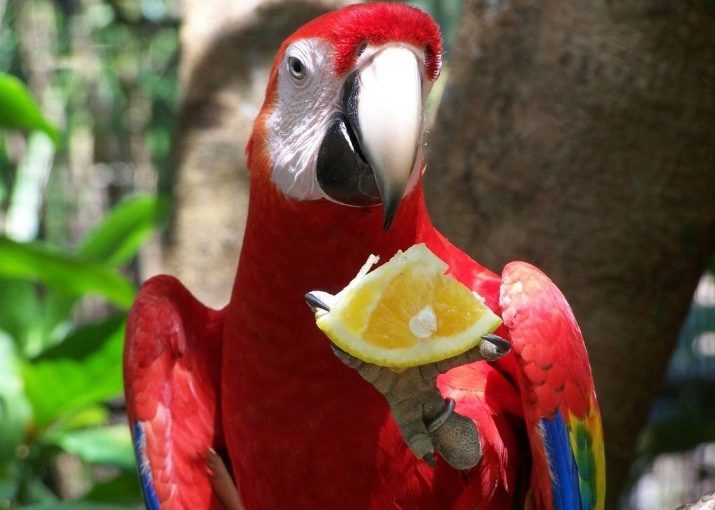
Home
Choosing the right size cage is very important for the parrot: the larger it is, the larger its size should be. He will not live long in cramped conditions. In addition, it is important to clean and clean the cage regularly. Do not install a bird aviary in the kitchen or near household appliances - this will adversely affect its health. The parrot will be happy with special toys hanging in a cage for him, and will not be bored in the absence of owners.
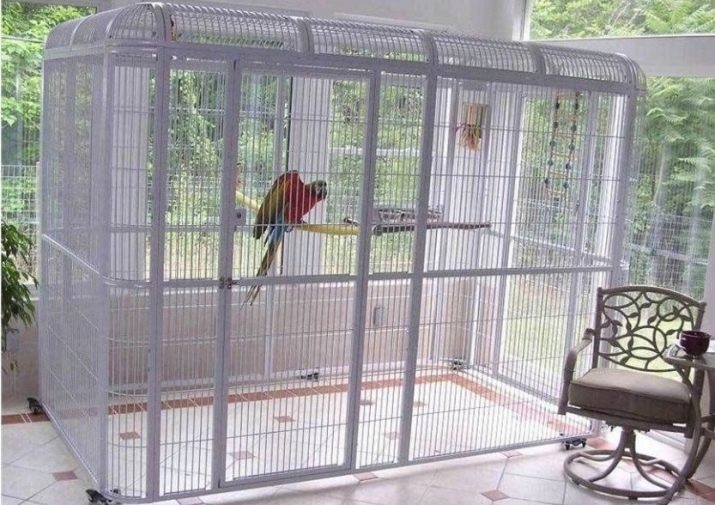
Air and sleep
It is important to observe a certain ambient temperature, its humidity and cleanliness. Drafts, direct sun, tobacco smoke or cold air negatively affect bird health. Get enough sleep and rest a parrot within 10-11 hours, in this he will help a clear mode, regulated by a cloak on the cage. It is necessary to exclude in the room with a bird a TV, loud sounds.
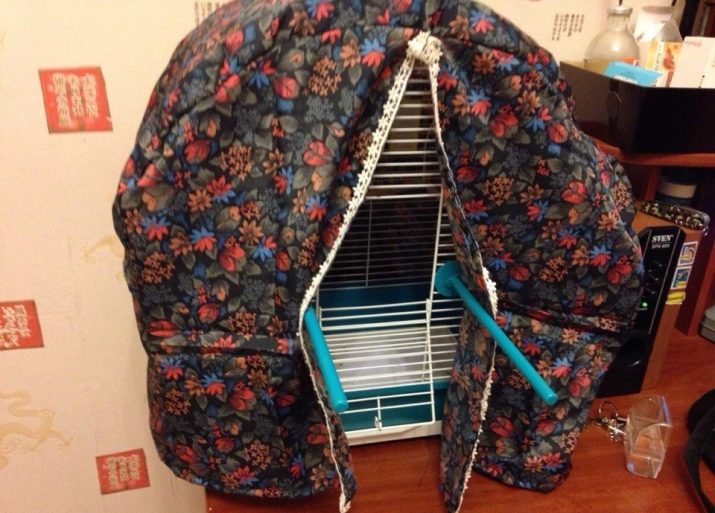
Communication and free flight
Every day, a parrot needs to be given the opportunity to fly and walk around the house, chat with the owners. It has been established reliably that parrots do not live long with non-communicative owners. Walking, flying, games improve the mood and well affect the physical form of the feathered.
During such “walks,” the bird should not be left unattended so that it does not bite anything with a powerful beak and does not crawl anywhere.

Water treatments
Parrots love to take baths, bathing right under the tap or in the makeshift pool in their cage. Do not refuse the pet this pleasure, as the bird realizes its needs. After water procedures, you need to ensure that there are no open windows, the fan is turned on, and the air conditioner.
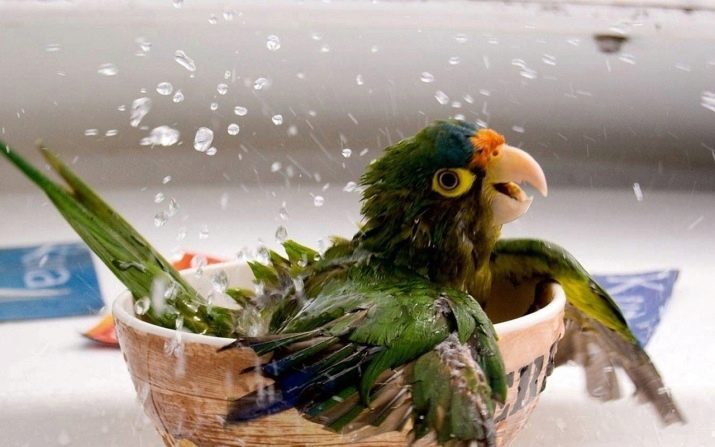
Mood and Health
An attentive owner will always notice the depressed mood of his parrot if he is hiding or avoiding food. This is an occasion to contact a veterinarian and in time to exclude the appearance of diseases. To prevent the health of a feathered pet, you should show the veterinarian 1-2 times a year, and then, perhaps, he will be able to join the ranks of long-lived record holders.
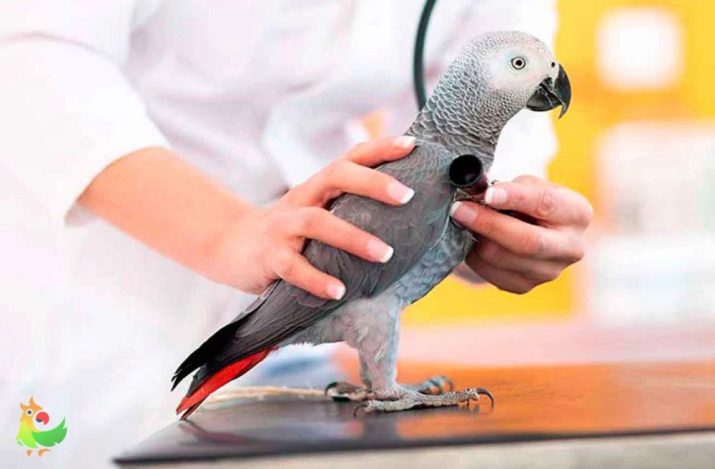
You can find out about the life expectancy, the characteristics of the species and the characteristics of the content of the parrot parrots in the next video.
